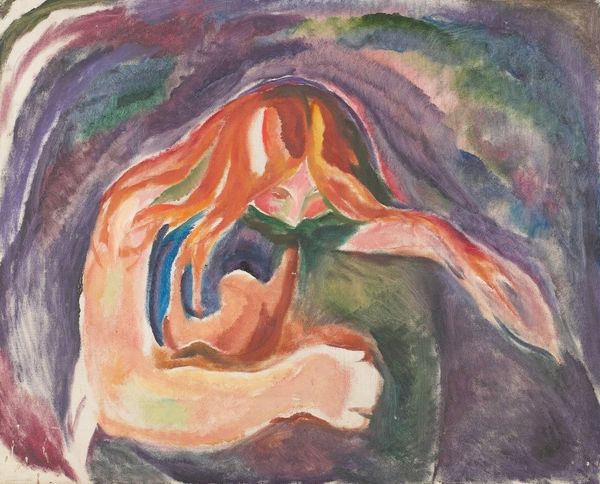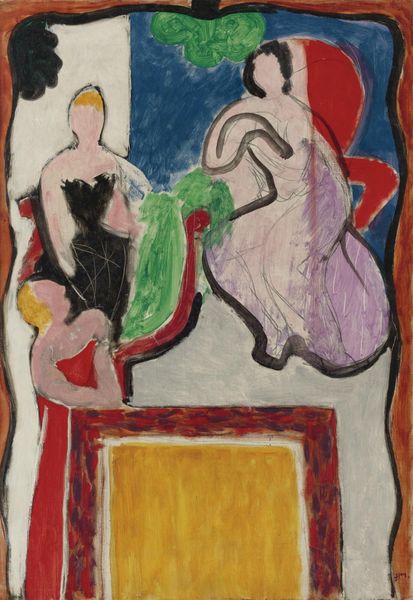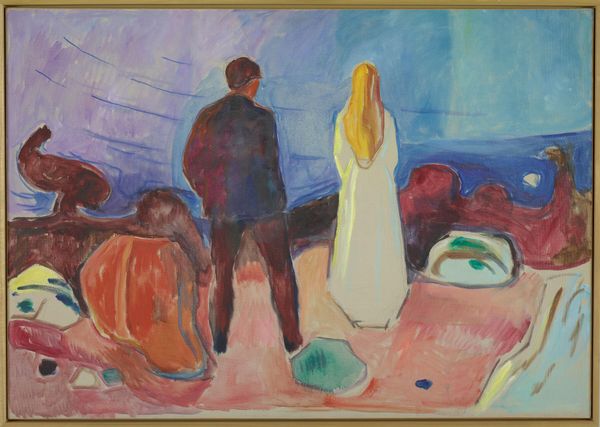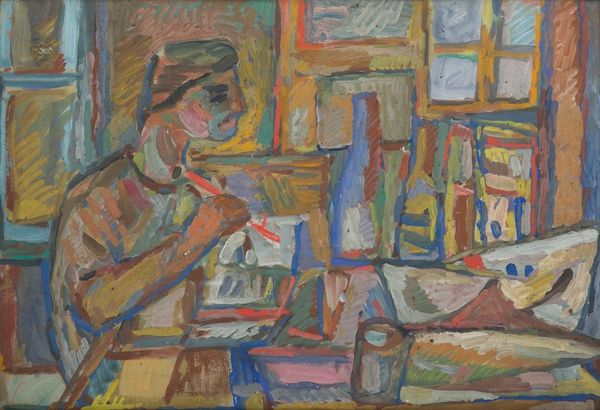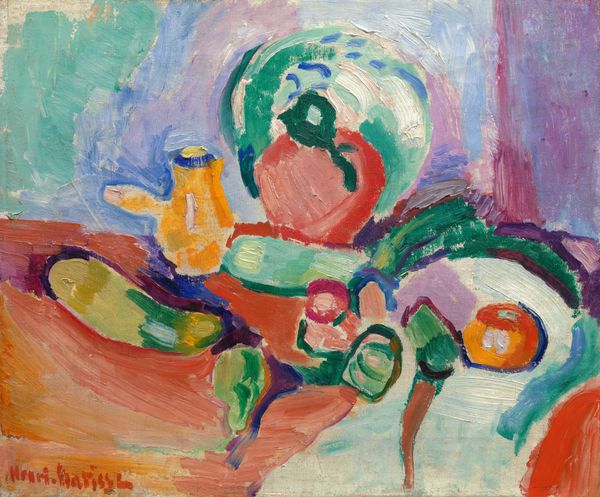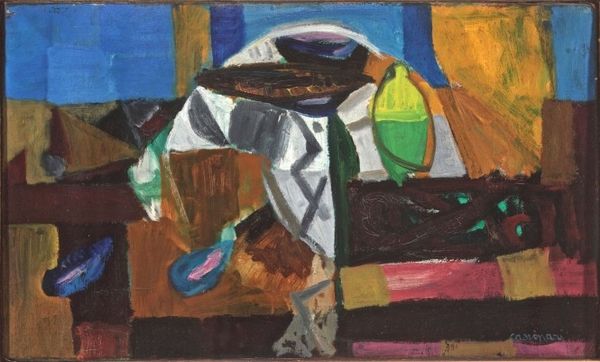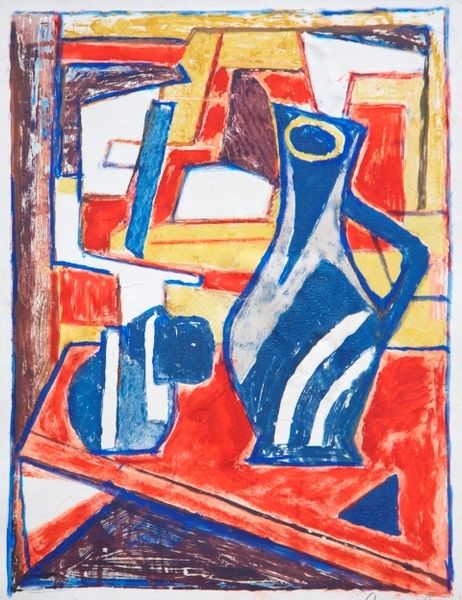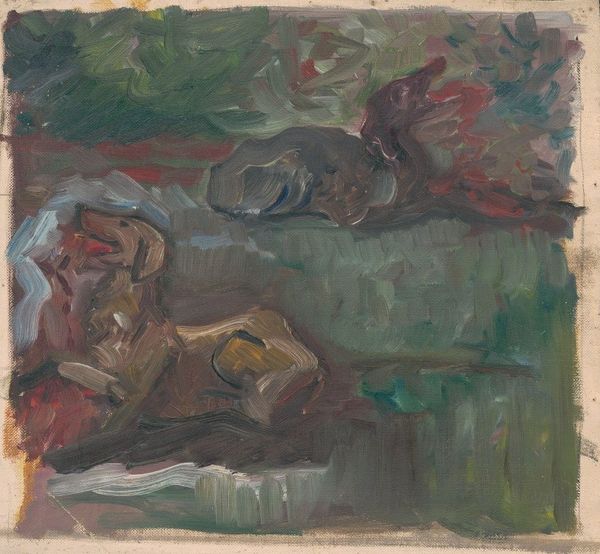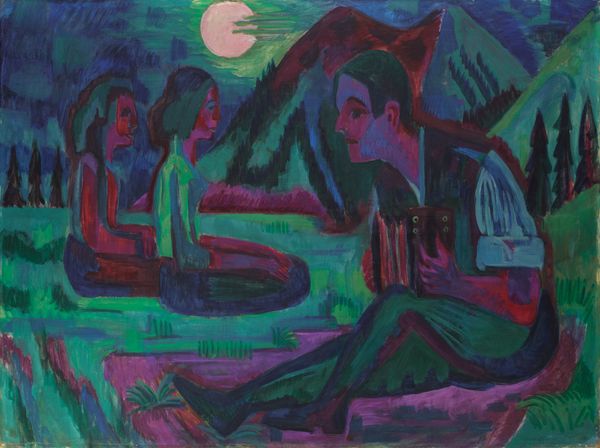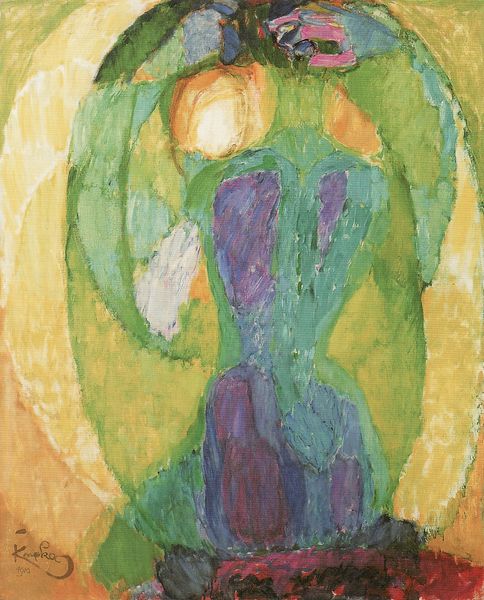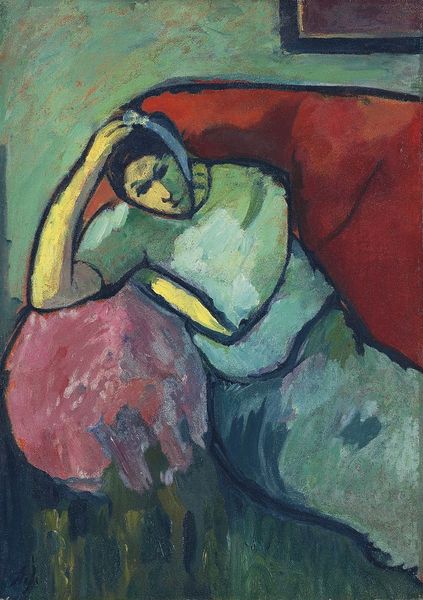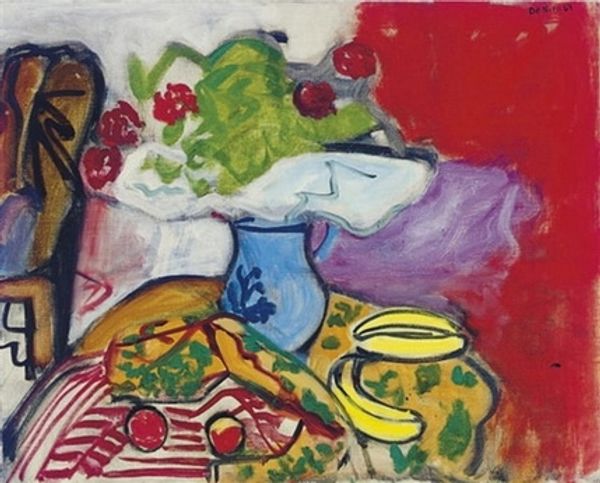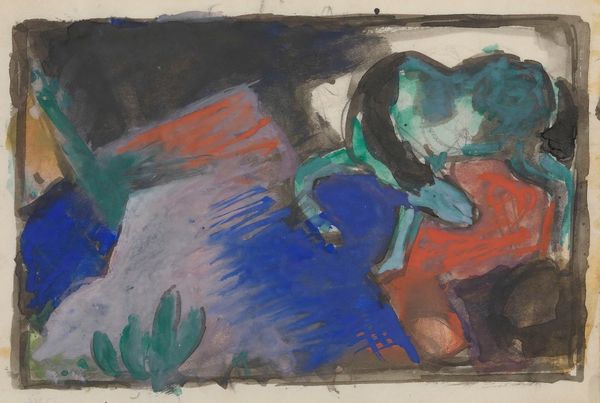
oil-paint, impasto
#
portrait
#
oil-paint
#
landscape
#
figuration
#
oil painting
#
impasto
#
expressionism
#
symbolism
Copyright: Public Domain: Artvee
Curator: Today, we're looking at Edvard Munch's "Melancholy. Weeping Woman on the Beach" from 1906. It's an oil painting that embodies both the Expressionist and Symbolist styles. Editor: My first impression is a feeling of profound solitude. The colors are muted yet intense, and the brushstrokes seem almost frantic in places. You can feel the weight of sadness. Curator: Absolutely. Munch created this during a turbulent period in his life, marked by personal struggles and artistic experimentation. You can see how Symbolism really feeds into the emotional and psychological states depicted here, which would become the foundation of expressionism. Editor: You can definitely see the materiality contributing to that feeling. The thick impasto gives the piece texture and a visceral quality, almost as if you're feeling the rough, unstable ground beneath the weeping woman. Curator: His exploration of mental states aligns with broader societal shifts. In that time, new attention was brought to understanding emotions and anxieties within burgeoning industrial society. Munch found himself at the center of those anxieties in his artistic expression. Editor: And that translates so well into the application of paint itself. It's less about representation and more about the act of applying the material onto the canvas, mimicking the very human act of processing emotions and lived experiences. There's raw physicality that adds so much. Curator: It makes me consider Munch’s impact on the evolving role of art institutions. He wasn’t just creating pretty pictures, he was challenging perceptions and using his work to engage in socio-cultural commentary. Editor: Yes, and he was exploring the very nature of making, stripping it down to the bare essentials of materials, gesture, and intent. "Melancholy. Weeping Woman on the Beach," for instance, becomes an object of raw experience rather than pure representation. Curator: Ultimately, both the public exhibition of the piece, as well as the act of making it are incredibly intertwined—the two are inextricably tied. Editor: A painful but, ultimately, necessary unravelling. Thanks for offering this rich context!
Comments
No comments
Be the first to comment and join the conversation on the ultimate creative platform.
